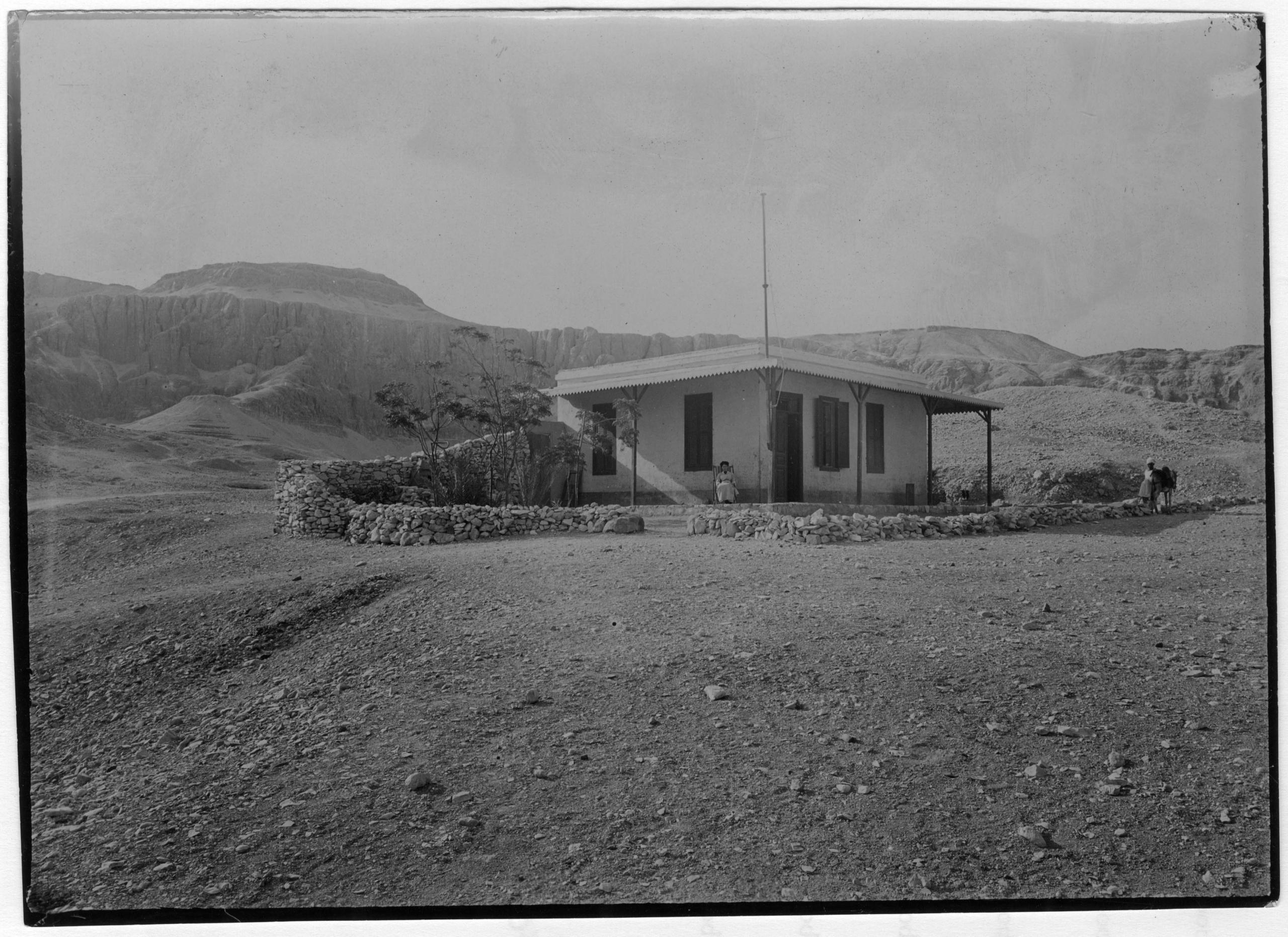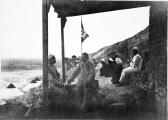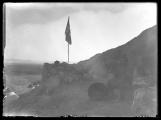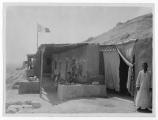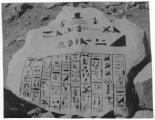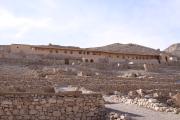Bayt Madinah
About
About
Bayt Madinah is the name applied to the dig house situated at Dayr al-Madinah. It is an elongated and narrow building set high along the cliff face that strikes a commanding presence where it overlooks both the ancient site Set-Ma’at, or “the Place of Truth”, the settlement wherein lived the tomb builders of the Valleys of the Kings and Queens, as well as the tombs of the same individuals. The house sits above an ancient tomb shaft and burial chamber, perhaps belonging to one of the tomb builders of Dayr al-Madinah.
An earlier, much smaller, mud brick house built by Italian archaeologist Ernesto Schiaparelli had only three rooms including two rooms and one kitchen. It was expanded by the French mission to consist of eight rooms. It is built of mud brick, and its roof is made of wood logs overlaid with paper that is covered with sand and stones. A cement floor covers the ancient tomb shaft and burial chamber. One room of the house, Theban Tomb 328 (TT 328), is actually an ancient tomb chapel belonging to a man named Hay. It has been repurposed as a storeroom for antiquities and mummified remains that have been excavated during field seasons.
Site History
Ernesto Schiaparelli, on behalf of the Italian Archaeological Mission, built the original house at Dayr al-Madinah in 1904 and worked there at least through 1909. It is not known when he abandoned the house. The dig house site did not only include the small mud brick house but also conical tents were set up in front of the house, slightly farther down the mountain, as additional accommodations for the excavation team working there.
The precise years that other early Egyptologists lived at the house are not thoroughly recorded beyond, vaguely, the 1920s-1930s. At some point during these years, the house was expanded by Bernard Bruyère who added five rooms, and tents were no longer used outside the front of the house. Once occupied by the French, the Italian flag was exchanged for the French flag. During the early French occupation of the house, two Egyptology notables, Bernard Bruyère and Jaroslav Černý, got up to some hijinks by pulling pranks and painting parodies at the house, all of which have been published by Anne-Claire Salmas (see bibliography for these articles).
Jaroslav Černý had decorated a large limestone ostracon with hieroglyphic text describing, in the manner of ancient Egyptian prayer formulae, a wish for beer and coffee to be offered at the house. At the end of the text, the prayer is offered to Étienne Drioton. In one of the bedrooms of the dig house, Bernard Bruyère had painted a parody of an ancient Egyptian funerary scene. The scene depicts Anubis mummifying a giant fish. In this same scene, Nephthys is shown crouching and petting the chin of the lion head that forms part of the funerary bed; Isis cheekily giggles while tying a pot to Anubis’s tail. Some other humorous parts of the scene include two wedjat eyes surmounting the funerary canopy that are depicted as wearing pince nez glasses, while two pairs of the Sons of Horus appear to be locked in an embrace. In the accompanying hieroglyphic text, Bruyère had signed his name as the artist of the amusing painting. So rarely are we given a glimpse into the frivolity that surely took place at every dig house. It is certainly a mainstay element of dig life today!
Now, owned by the Supreme Council of Antiquities, the Institut français d’archéologie orientale (IFAO) primarily occupies the house during archaeological missions. Between 2010 and 2012, Marcel and Monica Maessen conducted a photographic survey and preliminary research on the history of the house.
Dating
This site was used during the following period(s):
Exploration
Conservation
Conservation History
There is no information on conservation projects at Bayt Madinah.
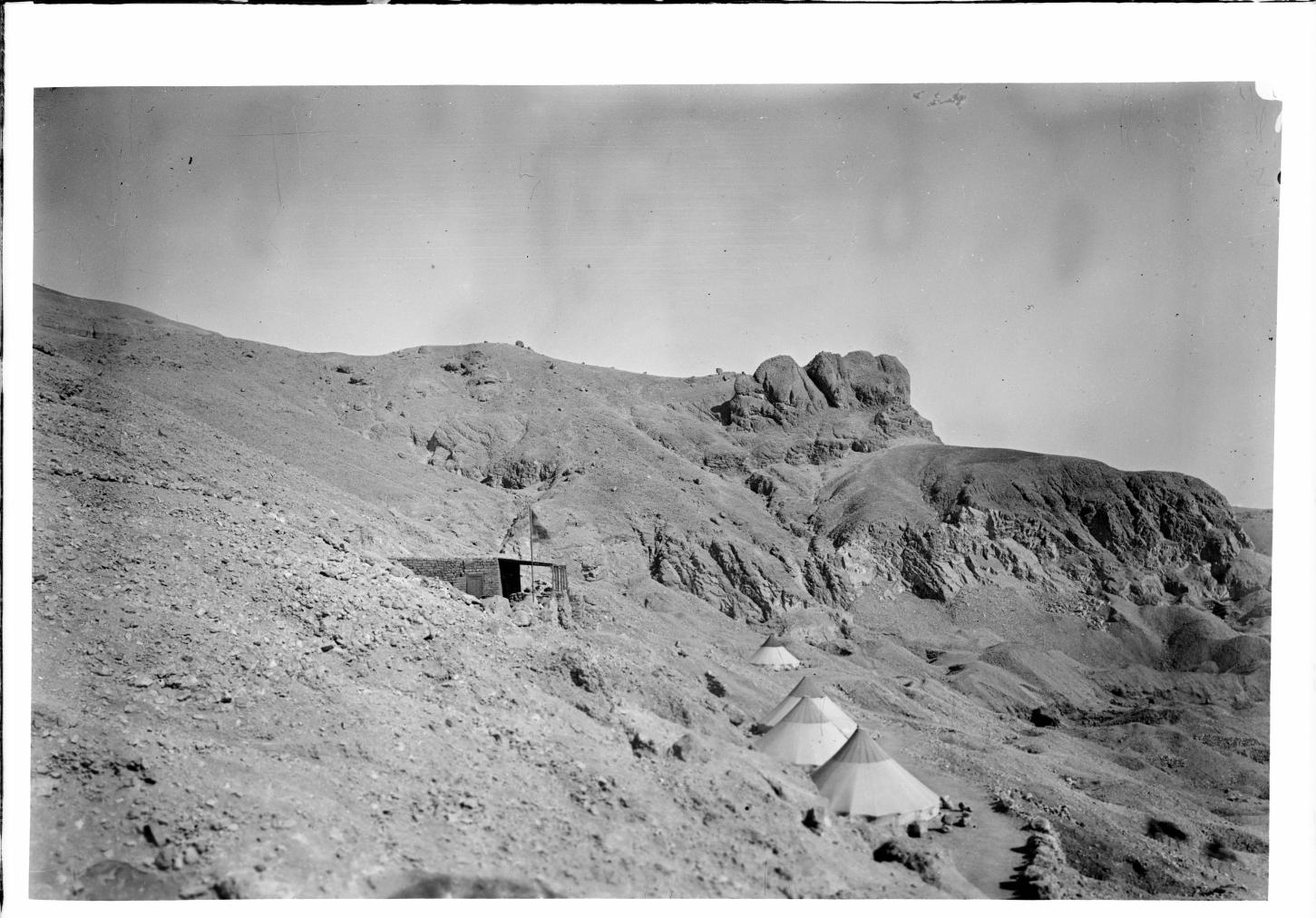




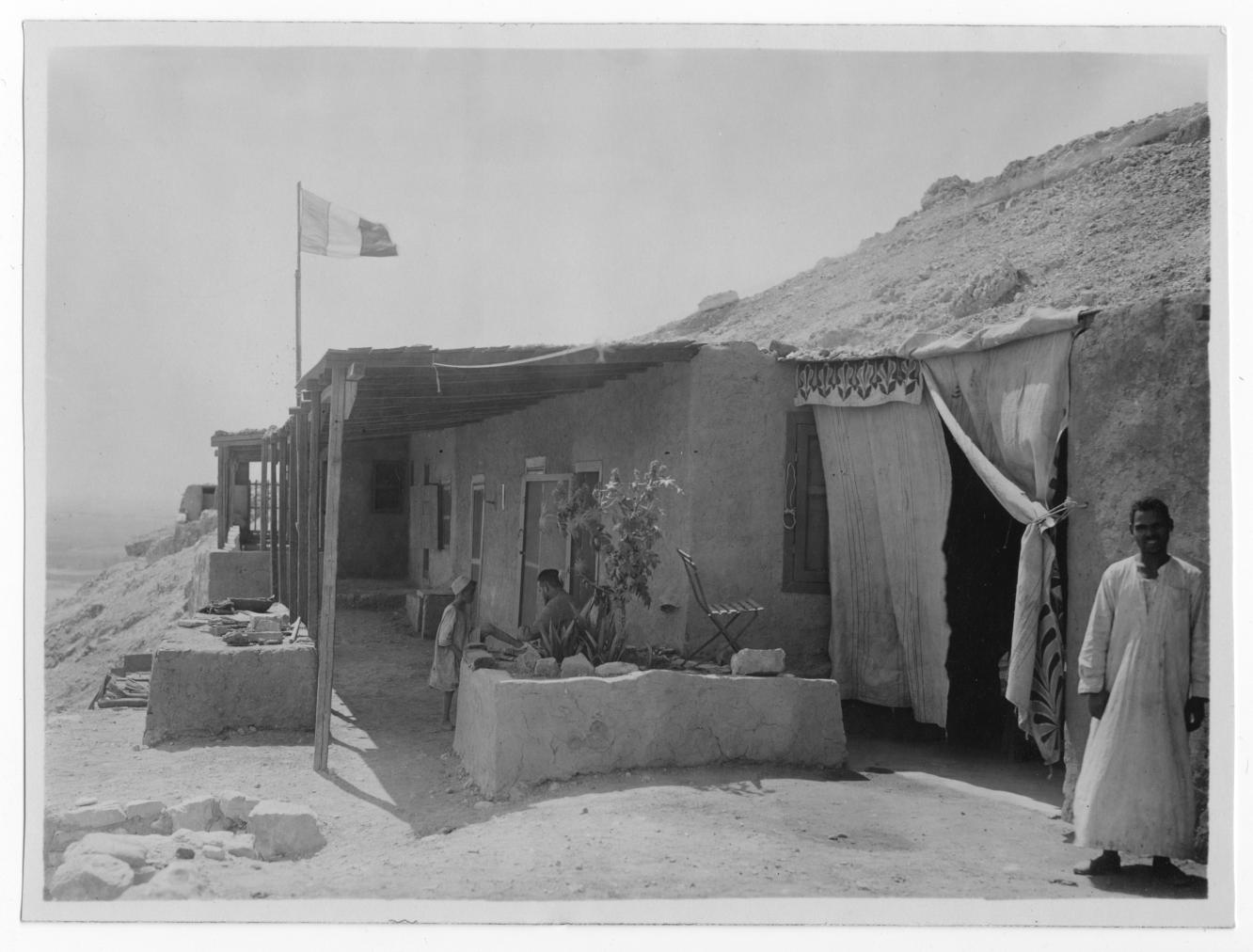
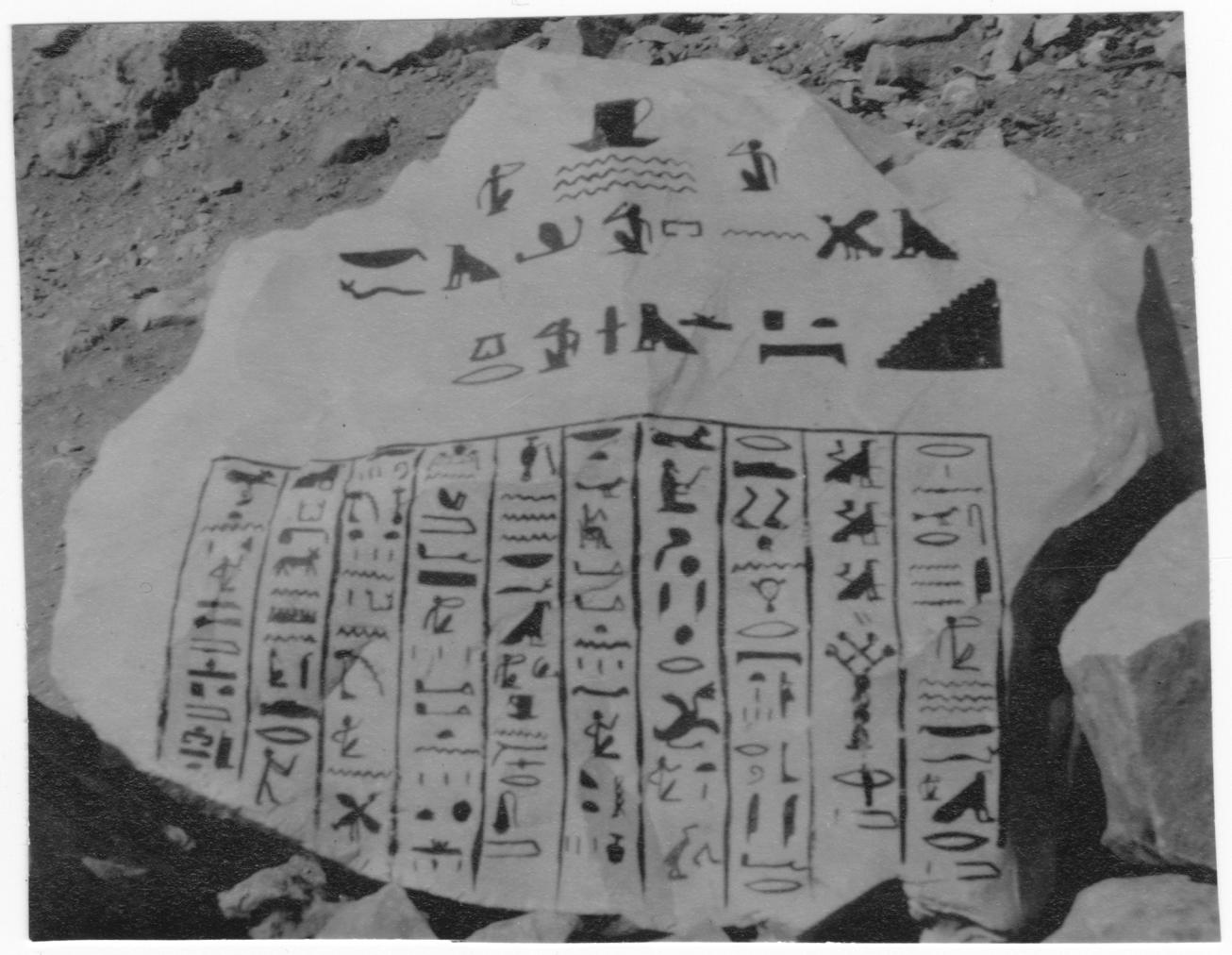
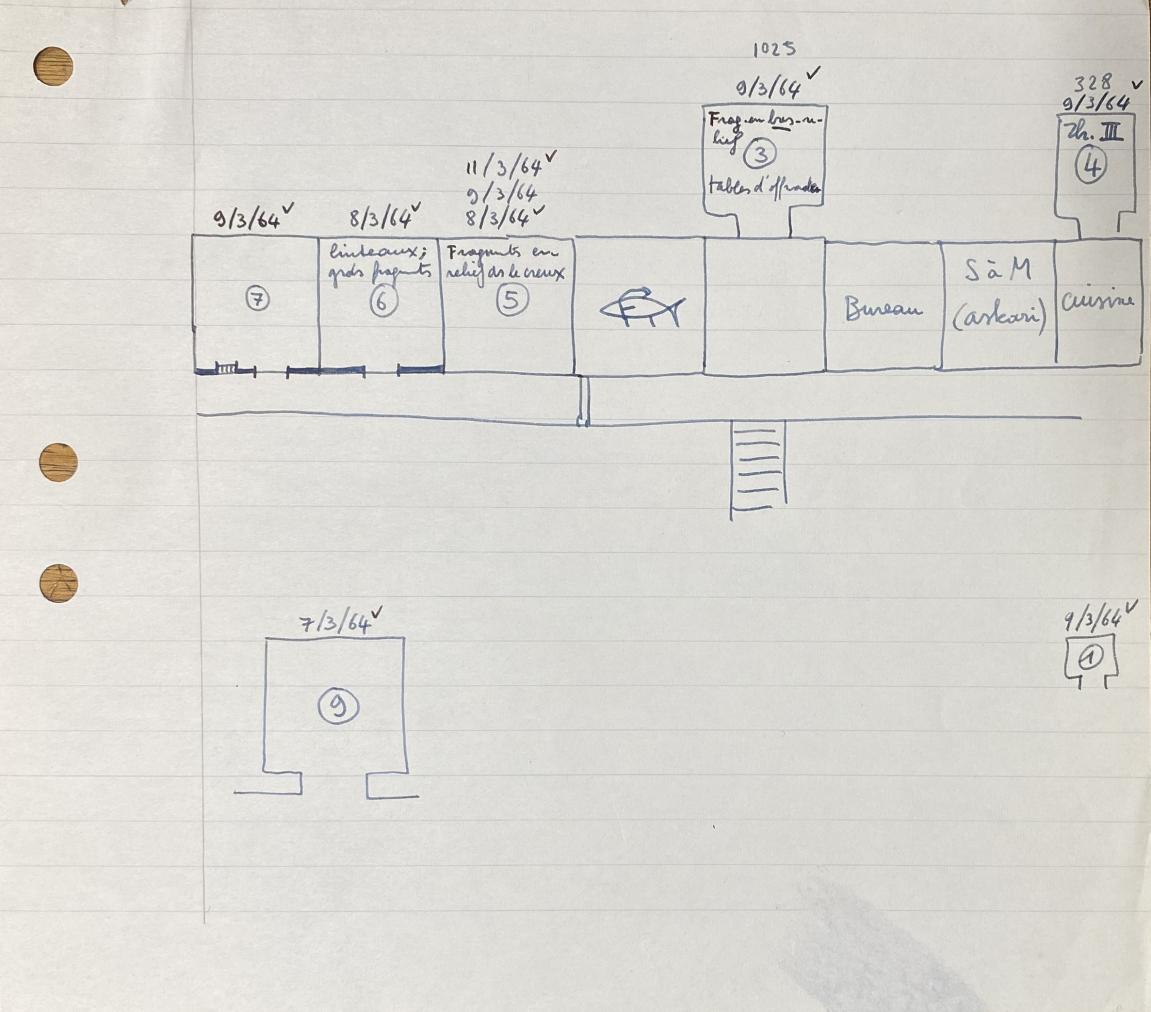
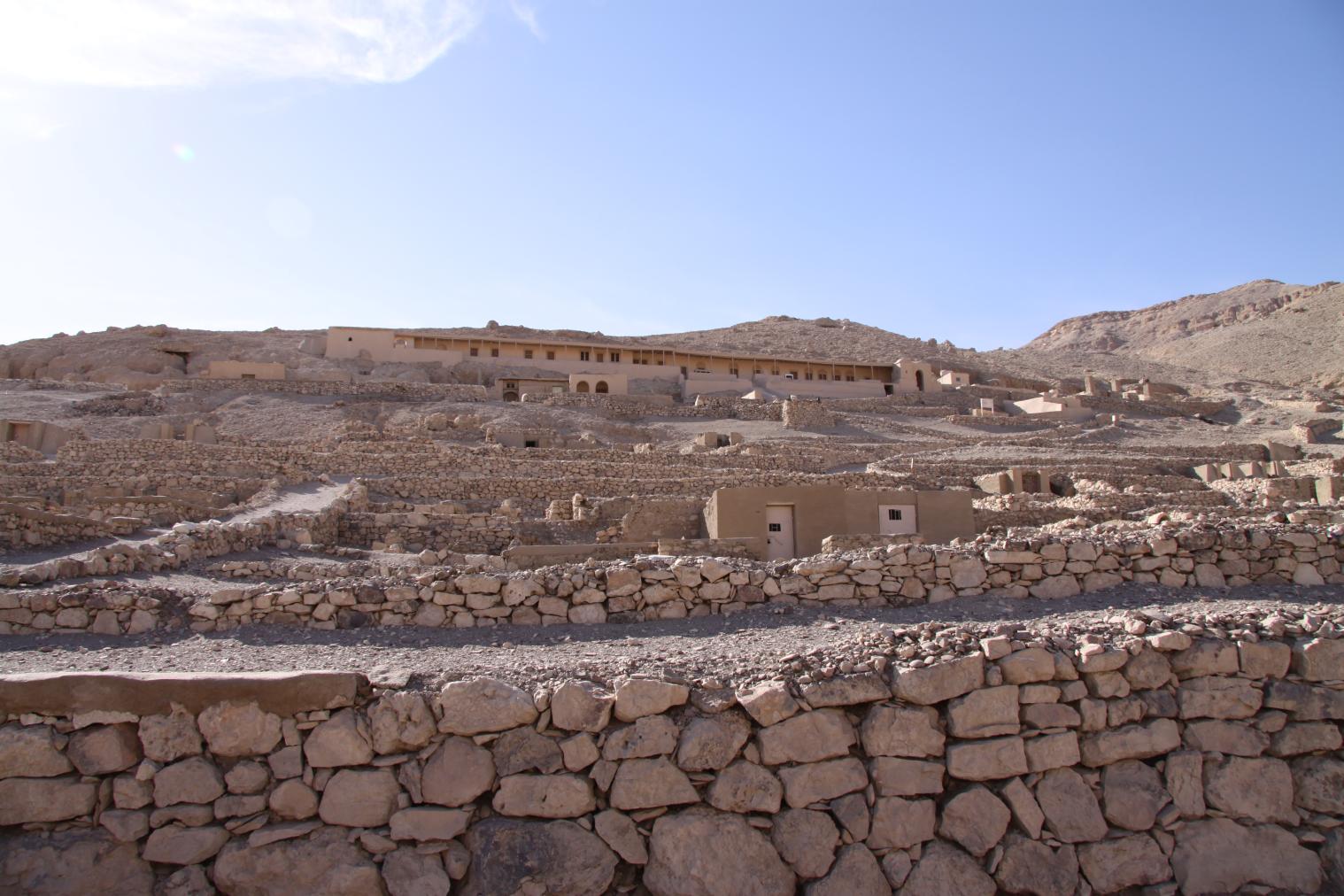
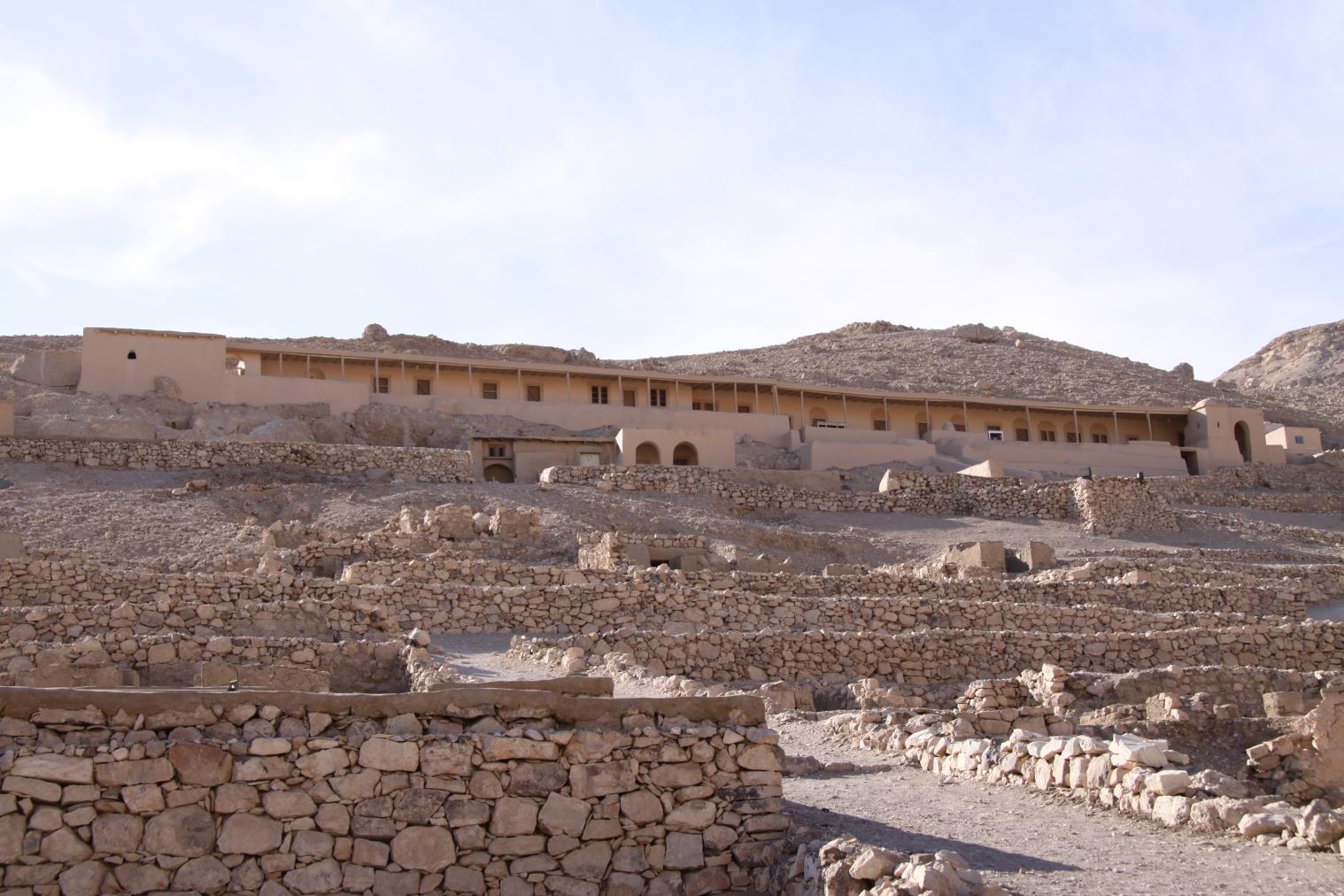

Bibliography
Salmas, Anne-Claire 2023. The café of Deir el-Medina: another archaeological prank. In: Almansa-Villatoro, M. Victoria, Silvia Štubňová Nigrelli, and Mark Lehner (eds), In the house of Heqanakht: text and context in ancient Egypt; studies in honor of James P. Allen. Leiden: Brill, 2023. Pp. 341-355.
Salmas, Anne-Claire. Morceaux de bravoure et traits d’humour: à propos de deux peintures de Bernard Bruyère dans la maison de fouilles de Deir el-Medina. Bulletin de l'Institut Français d'Archéologie Orientale 118 (2018): 403-440.
